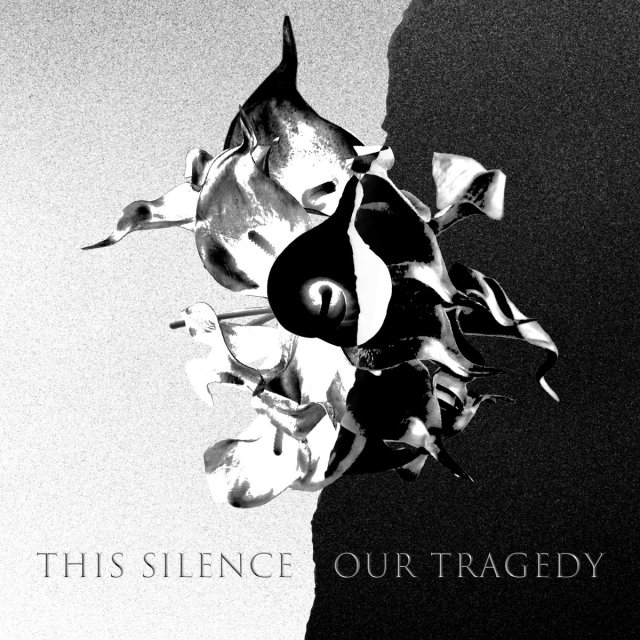 Simple Minds | Real To Real Cacophony – 3.5
Simple Minds | Real To Real Cacophony – 3.5
[…continued from last post]
Side two of the album began with what is unquestionably the finest track the band had ever done up to that point. That “Premonition” was not the world conquering single from the album, probably came down to its over five minute running time. Here marks the captivating moment when Derek Forbes stepped forward and said “don’t worry guys – I’ll drive the bus!” The result is a monster that was simultaneously the first SM classic and a blueprint for their next several albums.
It sounded as if it had been constructed wholly on the massive bass line that Forbes probably brought to the jam sessions where this album came together. Burchill and MacNeil let the rhythm section dominate as they added textural details on guitar and keys respectively, instead of top line melodies. When Mike MacNeil adds chords, they are either played staccato to heighten the song’s tension, or they remain long, sustained drones
Through it all, the confident, sinuous bass line pulls this amazing track in a serpentine path through the Berlin discos where the band had previously toured. While promoting the record, they heard “Premonition” playing in those same clubs and new possibilities opened up in their minds. This is the crucial moment when the band got the funk. It’s utterly contemporary and never fails to captivate me whenever I hear it… and I’ve heard it a lot! If all they ever achieved was this track, my devotion to this band would still shine as brightly.
 The side’s next track was instead culled as the lone single not to trouble the charts. “Changeling” was probably the most commercial song that Arista could have picked as a single, barring “Factory.” That didn’t mean that is was weak sauce in any way, though. “Changeling” was based on a monumental bass/synth riff where MacNeil and Forbes syncopate like there’s no tomorrow! McGee added mutant disco rhythms once again to move it forward. Coming on the heels of “Premonition,” it makes the second side of this album play like a variation on Bowie’s “Low/Heroes” with side one being fractured, oblique art rock and side two being dance funk material in the mold of “The Secret Life Of Arabia!”
The side’s next track was instead culled as the lone single not to trouble the charts. “Changeling” was probably the most commercial song that Arista could have picked as a single, barring “Factory.” That didn’t mean that is was weak sauce in any way, though. “Changeling” was based on a monumental bass/synth riff where MacNeil and Forbes syncopate like there’s no tomorrow! McGee added mutant disco rhythms once again to move it forward. Coming on the heels of “Premonition,” it makes the second side of this album play like a variation on Bowie’s “Low/Heroes” with side one being fractured, oblique art rock and side two being dance funk material in the mold of “The Secret Life Of Arabia!”
After two shocking dance numbers from the band, “Film Theme” was the album’s third and final instrumental. Never again would so many crowd a Simple Minds album, but these would be emblematic of the band’s early, adventurous phase. The dryly cinematic vibe lives up to the song’s name and MacNeil’s queasy synth lines suggest enough anxiety to remind the listener that this was still the same band who crafted side one. The next one reminded listeners that it was also the work of the band who made “Life In A Day.”
“Calling Your Name” was the sole throwback to the first album with the most conventional song structure here. It would have been a great track on the first album, though it’s overshadowed here by the mighty leaps taken elsewhere. Tellingly, it dated from the stages of the “Life In A Day” tour yet managed to make the leap onto the new album in any case. For that matter, so did the final song, though it sounded fully a piece with this second album. The final song, “Scar,” provided a suitable coda for the adventurous album that was an astonishing artistic volte-face like I’ve not heard before or since. It ended the record on a stately, dignified vibe.
There’s no denying that the genie escaped the bottle on this outing! The also-ran New Wave band with traces of The Boomtown Rats rubbing shoulders awkwardly with hints of the Velvet Underground had emerged from the chrysalis of their conflicting debut album sporting dramatic new forms that fully placed the band at the vanguard of the Post-Punk movement with which they identified. This was an album that could sit on the same shelves as those by Magazine or Joy Division without resorting to imitation. And it had a new secret weapon as rhythm section BrianMcGee and Derek Forbes came to the forefront of how the band wrote their material going forward [at least for the next five years]. Moving ahead, Simple Minds would now hang their sound on the powerful, immense bass lines and dry, Krautrock influenced rhythms that looked to trance atmospheres as a creative pathway in their pursuit of capturing the dread and paranoia of modern European life.
Next: …The classic drops











Side 2 rules. The 1-2 punch of the first two songs is thrilling. Overall, the artistic jump from LIAD to RTRC was one of the greatest in the history of pop music.
LikeLike
zoo – No argument from these quarters! Their whole artistic development arc from 1979-1984 is unparalleled to my ears. Elvis Costello and David Bowie come close, though.
LikeLike
Let’s Dance and Goodbye Cruel World included? :)
LikeLike
zoo – I have them on the same shelf with “Street Fighting Years!” Disclosure: I have every Costello album from 1977-1986. I have several that were released after “Blood + Chocolate,” but only a fraction of those released. I have every Bowie album with the exception of the Santa Monica album, and the “Reality Tour” CD. Costello was on a tear from “My Aim Is True” through “Imperial Bedroom.” As long as you discount “Almost Blue.” Other than that, his golden arc stops with “Trust.” Five amazing albums that few can match. With Bowie, it can be argued that his golden arc began with “Hunky Dory” through “Scary Monsters” though “Pin Ups” and “Young Americans” are runts of that litter. The live albums are right out! Simple Minds had a run of sequential albums that I like even better. I would argue that from the first album through “Sparkle In The Rain” is a development arc that’s best of breed.
LikeLike
Pretty much right on with you there Monk. I will give Costello a few more points for Almost Blue than I did over the last 30 + yrs. It has matured for me as I have matured. I am not so harsh on Young Americans. I think Bowie needed to shed his Ziggy skin down to the last scales and it certainly does that. Pin Ups should be seen as more than a stop gap album if only because Bowie was developing so quickly at that point. I just love the psycho freak out that is See Emily Play, the Glam’d up versions of Where Have All The Good Times Gone + Friday On My Mind, the Garage Glam of Don’t Bring Me Down. The less said about Bowie’s reading of Springsteen’s Growing Up, the better.
LikeLike
“Almost Blue” is one of the best Costello albums ever. It is a sleeper cell in his catalog unjustly overlooked by many who wanted something other than what he offered. It has aged much better than a lot of his other albums have.
LikeLike
Side two is MORE classic Post Punk than anyone is EVER going to give Simple Minds credit for. Premonition and Changeling are archetypal Post Punk. A pair of musical phoenixes rising from the still burning embers of mid 70’s Glam and Art Rock but twisted by the emotional wreckage and contempt of Punk. This is something they shared with The Banshees, Magazine and Joy Division. Premonition gathers some psychedelic influences making Simple Minds, like Th Bunnymen, one of the first Post Punk bands to mine that particular era. Changeling reminds me a good deal of Pleasure Principle/Telekon Gary Numan – mixing live drums with synth and drum patterns in an aggressive, danceable mix. Film Theme carries some of this Numan influence on but also reminds me of the direction The Stranglers were taking at about the same time on Shah Shah A Go Go and Meninblack – A sort of Futurist Baroque sound.
But I am going to lobby here for Calling Your Name. It has a Punk urgency, but it is grounded in early Roxy Music sound. The opening keyboard line is like something from a late 60’s sci-fi film soundtrack, or a Morse code warning. There’s a sinister timbre to Kerr’s Ferry-esque delivery at this point that grabs you by the throat.
Pointing to Scar as a fitting coda to these proceedings in spot on! I’ll go a step further to say it’s a coda to all that came before it, while hinting to the musical vistas which Simple Minds were about to set out upon. It ends feeling incomplete which had to have been a conscious decision. It has a – excuse the use of this word – vibe, which will surface again and again on their future albums all the way to today.
LikeLike
Thank you for this blog. It has be registering to SM entire catalog. I have a lot more appreciation for RTRC than I did in the 80s when I was a university student.
LikeLike
Jena Fuller – Welcome to the comments! If you love Simple Minds, there’s a lot to read here…just saying. It still boggles my mind that one day in 1983 I bought “Real to Real Cacophony” AND “Empires + Dance.”
LikeLike